Geography: September 2023 UPSC Current Affairs | Current Affairs & Hindu Analysis: Daily, Weekly & Monthly PDF Download
Earthquake in Morocco
Why in News?
The most powerful earthquake in Morocco's history struck late on the 8th of September 2023. The earthquake had a magnitude of 6.8 and its epicenter was located in the Al-Haouz province, within the Atlas Mountains near the historic city of Marrakech.
- A series of aftershocks, including a 4.9 magnitude tremor, added to the region's distress.
What are the Causes of the Earthquake in Morocco?
- The earthquake resulted from the convergence of the African plate and the Eurasian plate along a complex plate boundary.
- The earthquake's faulting mechanism was classified as "oblique-reverse," indicating movement along the fault plane where the upper block moves up and over the lower block within the Moroccan High Atlas Mountain range.
- Faults are fractures in rock formations that enable rock blocks to move relative to each other. Rapid movement along faults can trigger earthquakes.
- Faults are categorized by their dip (angle with respect to the surface) and slip direction.
- Dip-slip faults include normal faults (upper block moves down lower block) and reverse faults (upper block moves up and over lower block), reverse faults are common in areas of tectonic compression.
- Strike-slip faults involve horizontal movement along the fault plane.
- Oblique-slip faults exhibit characteristics of both dip-slip and strike-slip faults.
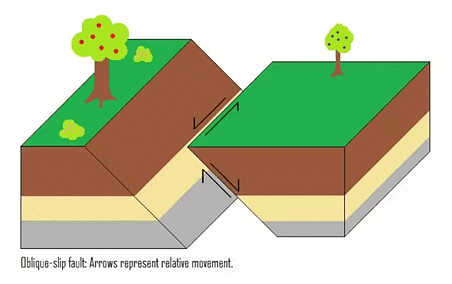
- The earthquake occurred at a relatively shallow depth beneath the Earth's surface, which is a contributing factor to its destructive potential.
- Shallow earthquakes are more dangerous due to their proximity to the Earth's surface.
- They release more energy compared to deeper quakes, making them potentially more destructive.
- Deeper earthquakes lose energy as seismic waves travel greater distances.
Strongest Earthquakes in History
Why in News?
Recently, a powerful 6.8 magnitude earthquake struck Morocco killing over 2,900 people.
- According to the Significant Earthquake Events (SEE) database, this is the strongest quake to hit Morocco.
- The SEE database maintains some of the oldest earthquake records that fulfil certain criteria.
What is the NCEI’s Data on Earthquakes?
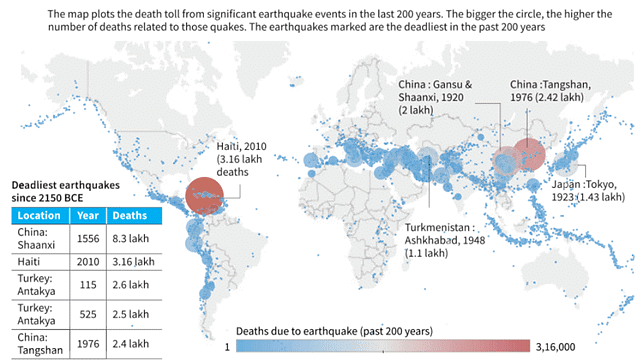
- Global Highest Earthquakes: As per NCEI, in the last 200 years, China has suffered the highest number of quakes — 428.
- It is followed by Indonesia (366 quakes), Iran (272), Japan (256), and Turkey (209).
- Most Severe Earthquakes: In the past 200 years, there have been four quakes with a magnitude of 9+.
- The most severe quake struck the Chilean city of Puerto Montt in 1960 (9.5).
- This is followed by Alaska in 1964 (9.2), Honshu (Japan) in 2011 (9.1), and Sumatra (Indonesia) in 2004 (9.1).
- Of the 10 most severe earthquakes since 2150 BCE, seven have occurred in the last 200 years.
- Morocco: The recent one that occurred is the strongest that hit Morocco. The deadliest ever to hit the country occurred in 1960 and killed about 13,100 people (Magnitude at 5.9).
- India: As per NCEI, India has recorded 85 quakes in the last 200 years and ranks 16 on the list of countries with highest earthquakes.
- The deadliest earthquake to hit India (either in the last 200 years or since 2150 BCE), occurred in 2001 in Gujarat.
- The Bhuj earthquake (magnitude - 7.6), as it is commonly known, is considered to be the deadliest as it killed over 20,000 people.
- However, the Bhuj earthquake was not the strongest; the 1941 earthquake in Andaman (poorly recorded due to WW-II), and the 1897 earthquake in Assam, were both considered the strongest with a magnitude of 8.
- The deadliest earthquake to hit India (either in the last 200 years or since 2150 BCE), occurred in 2001 in Gujarat.
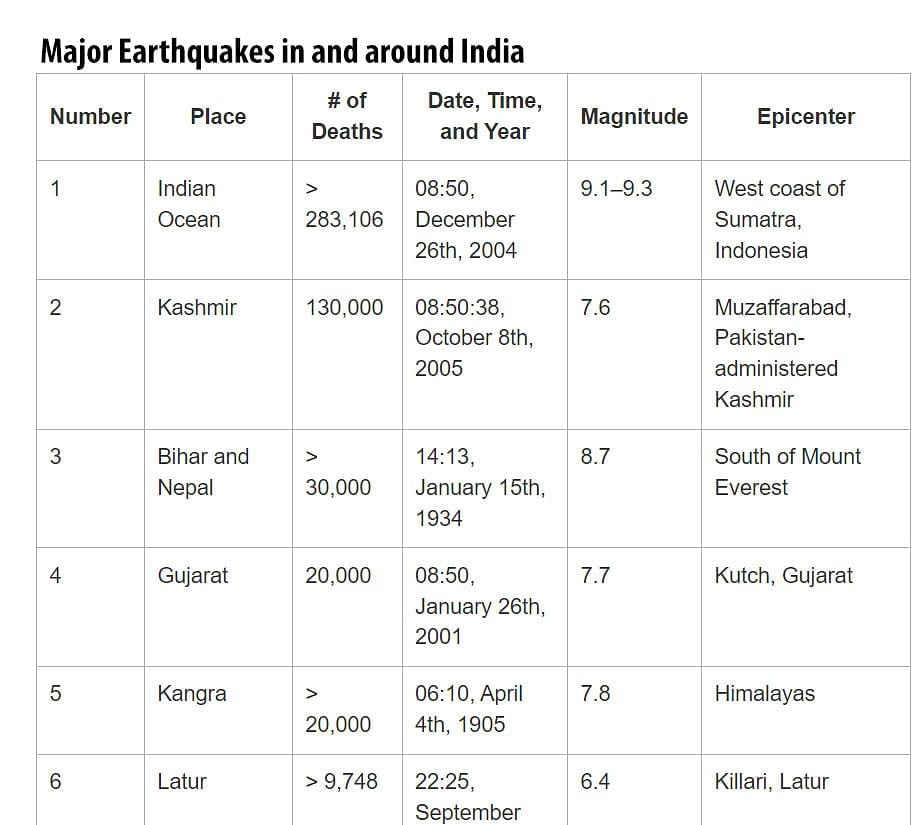
Drop in India’s Reservoir Water Levels
Context
Recently, the India Meteorological Department (IMD) said that India has witnessed a high rainfall deficit in the month of August.
More about the news
- Due to low rainfall, the water levels in crucial reservoirs have experienced a sharp decline, raising concerns about water supply for households, industries, and power generation.
- Basically, August is a month when India's reservoirs see their water storage levels increase significantly. However, August 2023 was an exception, as it marked the driest August in over 120 years.
- Instead of the expected 255 mm of rainfall, the country received only about 162 mm, resulting in a 36% rainfall deficiency.
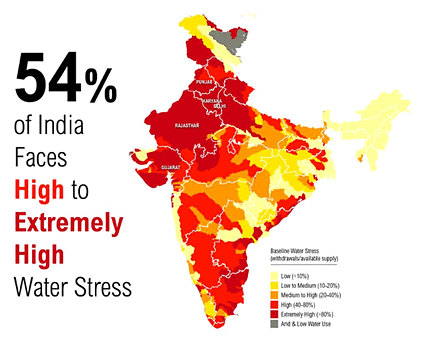
What can be the consequences of dry water reservoirs?
- Water Scarcity: Reduced availability of water for agriculture, drinking, and industrial purposes in the affected region.
- Increased competition for limited water resources, potentially leading to conflicts among different user groups.
- Crop Failure and Food Insecurity: Reduced irrigation water can result in crop failures and lower agricultural productivity, leading to food shortages and higher food prices.
- Farmers may face financial distress due to reduced income from their crops.
- Ecological Impact: Depletion of groundwater levels due to increased reliance on groundwater for irrigation during dry periods.
- Negative effects on aquatic ecosystems and biodiversity as water levels decrease and water quality deteriorates.
- Impact on Hydropower Generation: Reduced water levels in reservoirs can lead to decreased hydropower generation, affecting the availability of electricity in the region.
- Economic Consequences: Decline in economic activities of people dependent on water resources, such as fisheries, tourism, and water-based industries.
- Loss of livelihoods for communities dependent on these activities.
- Migration: In some cases, prolonged water scarcity can force people to migrate in search of water and livelihood opportunities, potentially leading to increased urbanization and strain on urban infrastructure.
- Infrastructure Damage: Low water levels can expose submerged structures and infrastructure, leading to damage and the need for costly repairs.
- Health Issues: Water scarcity can result in inadequate sanitation and hygiene practices, leading to increased health risks for affected populations.
- Long-term Environmental Changes: Repeated or prolonged dry reservoirs can contribute to long-term environmental changes, such as soil degradation and desertification in surrounding areas.
Conclusion
To mitigate the consequences of dry water reservoirs, it is essential to adopt sustainable water management practices, including efficient water use, rainwater harvesting, groundwater recharge, and the development of drought-resistant crops. Additionally, improved water governance and infrastructure can help address these challenges and ensure the sustainable use of water resources in India.
Carrying Capacity of Himalayan States
What is the concept of “carrying capacity”?
- Carrying capacity of a biological species in a particular habitat refers to the maximum number of individuals (of that species) that the environment can carry and sustain, considering its geography or physical features.
- The physical features present in the environment act as limiting factors (e.g. food, water, competition, etc.). Thus, the population limit can be expected to depend on these factors.
- In essence, food availability is an important variable as it affects the population size of the species.
- It does so in such a way that if food demand is not met over a given period of time the population size will eventually decrease until the resources become adequate.
- By contrast, when food supply exceeds demand then the population size will soon increase and will stop increasing when the source is consequently depleted.
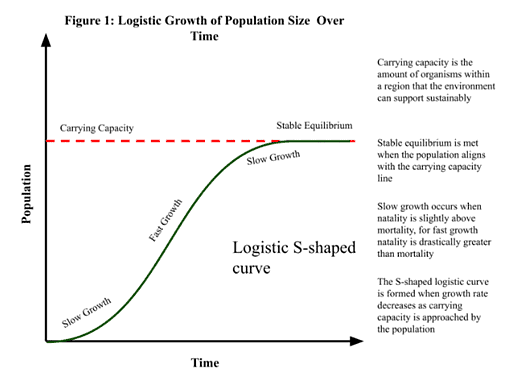
- A population may grow at a faster rate and follow a J-shaped curve. When the birth rate surpasses the death rate of the species, this results in exponential growth. However, this trend soon changes as resources become limited. The growth rate slows down.
- Soon, it reaches a stable equilibrium where biomass in the given area seems unchanged over a certain period of time. At this point, the death rate appears to be compensated by the birth rate within a population. This means the per capita birth rate equals the per capita death rate.
- By contrast, when deaths appear to outgrow births, this indicates that the carrying capacity has been exceeded. This is a case of overshoot. The population may go below the carrying capacity. This can occur, for instance, during disease and parasitic outbreaks.
Factors affecting the carrying capacity of an ecosystem
- Food and water supply
- Habitat space,
- Competition (intraspecific and interspecific),
- Physical factors (e.g. extreme heat, drought, etc.),
- Chemical factors (e.g. pH, mineral deficiency, etc.)
- Anthropogenic factors.
- Note – The sum of these factors that end up restricting the biotic potential of a species is referred to as environmental resistance.
Why Himalayan ecosystem is unique?
- These systems, with their steep slopes and sharp gradients, are heterogeneous and exhibit sharp and most often systemic changes in climatic variables over very short distances.
- These features consequently result into enhanced changes in hydrological processes, with accelerated direct runoff and erosion.
- Major rivers of the region have their origin from these mountains and are the source of water for a large proportion of the human population within and outside the mountain region.
- Many of the world’s crops originate in mountains, a crucial resource that should be conserved for sustaining modern agriculture.
- Natural wealth in the region, including geological assets, forms an important part of the Himalayan eco-system.
- All this has contributed to a whole range of diversity in indigenous human habitations, cultures and knowledge systems. The region is largely inhabited by indigenous societies.
Therefore, sustaining biodiversity in the region also means protecting the interests of the people. The region serves as a rich repository of plant and animal wealth in diverse ecological systems. These ecosystems reflect a mosaic of biotic communities at various spatial and organizational levels.
Recognition of the Himalaya as one among 34 global biodiversity hotspots aptly reflects its’ wide ranging ecological significance.
The vulnerability of the biological and physical features of the Himalayan Ecosystem towards natural and human induced disturbances is well recognized. Immediate actions are required to ensure sustenance of the ecosystem.
Infrastructure effect on Himalayan region
Infrastructure like dams, roads, hotels, industries etc are increasing the vulnerability of the Himalayan ecosystem in multiple ways. Joshimath crisis is one such example.
Following are the various impacts:
- Slope destabilization: Large scale construction of roads, hotels, powerhouses etc. involves blasting, quarrying, deforestation and muck disposal which loosens slopes and destabilizes them.
- Floods :Altered river flows reduce flood absorption, risks flash floods downstream (Uttarakhand disaster, 2013).
- Landslides: By disrupting underground streams and aquifers, tunnels can weaken slope stability leading to landslides (Kinnaur, Himachal Pradesh 2022)
- Earthquakes: Huge pressure is exerted by the large structures of the dams which in turn create fractures and faults in the rocks below generating earthquakes. For e.g – Koyna dam.
- Erosion and desertification: Siltation in dams devoid the rivers of natural sediments. Soil downstream does not get enough nutrients and thus issues of soil erosion, desertification etc rises. Forced displacement – This destroys livelihood sources of indigenous communities further increasing their vulnerabilities.
Pacific Weather Changing: More Multi-Year El Nino and La Nina
Why in News?
A recent study has raised concerns about the impact of human activities on the duration and behaviour of El Nino and La Nina events.
- It found that Walker Circulation has changed its behavior since the industrial era and multi-year El Nino and La Nina events could become more frequent.
What do the Recent Studies Suggest?
- The Walker Circulation, a key atmospheric component of ENSO, drives weather patterns worldwide. Researchers aimed to assess whether greenhouse gas emissions had influenced this critical climate driver.
- The study's findings revealed that the transition from El Nino to La Nina has slightly slowed over time. This suggests that multi-year climate patterns may become more frequent in the future, posing heightened risks of droughts, fires, heavy rainfall, and floods.
- While the overall strength of the Walker Circulation has not yet decreased, researchers speculate that elevated carbon dioxide levels could weaken it.
- Many climate models also predict a decline in the Walker Circulation by the end of the century.
- The study also highlighted a connection between volcanic eruptions and the weakening of the Walker Circulation. This phenomenon often leads to El Nino-like conditions.
- The research identified three significant El Nino events in the twentieth century that followed volcanic eruptions: Mount Agung in 1963, El Chichón in 1982, and Mount Pinatubo in 1991.
What can be the Impacts of Rising Multi-year El Nino and La Nina Events?
- Increased Frequency of Extreme Weather Events: Multi-year El Niño and La Niña events can alter the patterns of precipitation, temperature, wind, and atmospheric pressure across the globe, leading to more frequent and severe droughts, floods, heat waves, cold snaps, storms, and wildfires.
- Natural Disasters:
- Floods and Droughts: Multi-year El Nino events can amplify the risk of prolonged droughts followed by severe flooding events in different regions.
- Conversely, multi-year La Nina events can lead to excessive rainfall and flooding in some areas, followed by extended periods of drought in others.
- Tropical Cyclones: The frequency and intensity of tropical cyclones can be influenced by ENSO events.
- Multi-year events can result in variations in cyclone activity in different ocean basins, affecting coastal regions' vulnerability.
- Agriculture and Food Security: Multi-year El Nino-induced droughts can lead to reduced crop yields, affecting global food supplies and prices.
- In contrast, multi-year La Nina events may enhance crop production in some regions but also lead to excessive rainfall and waterlogging, damaging crops.
- Economic and Societal Impacts:
- Economic Costs: The combined impacts of multi-year ENSO events can result in significant economic costs due to damage to infrastructure, increased energy demand, and disruptions to global trade in commodities such as food and minerals.
- Health Risks: Changing weather patterns can affect the spread of diseases, with increased risks of waterborne diseases during flooding and vector-borne diseases during prolonged droughts.
- Environmental Consequences:
- Ecosystems: Multi-year events can stress terrestrial and marine ecosystems, leading to coral bleaching, forest fires, and habitat disruptions.
- Ecosystems may struggle to adapt to the rapid and persistent changes in temperature and precipitation.
- Ecosystems: Multi-year events can stress terrestrial and marine ecosystems, leading to coral bleaching, forest fires, and habitat disruptions.
- Biodiversity: Shifts in environmental conditions can impact the distribution and survival of species, particularly those sensitive to climate variations. This can have cascading effects on biodiversity.
- Floods and Droughts: Multi-year El Nino events can amplify the risk of prolonged droughts followed by severe flooding events in different regions.
|
38 videos|5293 docs|1118 tests
|
















